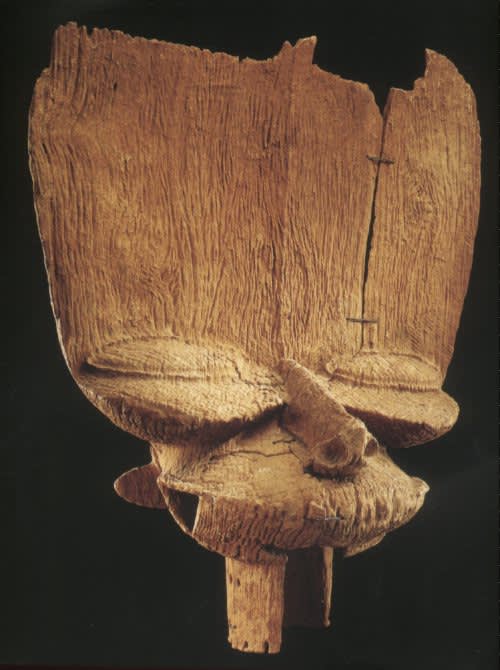
Talking about one of the ‘holy grails’ of African Art, The Metropolitan Museum of Art has acquired one of the last Batcham headdresses in private hands. The acquisition happened in all silence earlier this year, and the mask just made it to the website here – pictures are still missing, so fresh is the news.
After acquiring one of the best Bamana ci wara headdresses last year, as well as a world class Hemba ancestor statue, the Epstein Sachihongo mask, and a great Jukun shoulder mask in these last few years, the MET definitely is leading the way. Kuddos to head of the department, Alisa Lagamma, who, thanks to a small circle of donors (Jim Ross and Marian Malcolm in this case), once more strengthens the museum’s holdings with an important icon of African Art. This is even more impressive if you know that the museum is currently going through a very difficult period (source).
This rare 19th-century mask is one of the less than 20 known masks of its kind in public and private collections. These were the only three examples known until the mid-1960s, when several other examples were collected in situ. The Belgian African art dealer Pierre Dartevelle acquired his headdress in Cameroon between 1967 and 1970 and it stayed in his private collection ever since. The selling price is unknown, but it certainly will have been a seven digit number. The headdress is not on view yet, but hopefully soon will be. I’m delighted that another ‘eroded’ object will be shown publicly – in the past the African art wing mostly showed art in a ‘pristine’ condition.
These headdresses are designated “Batcham” after the small chiefdom in the northwest Bamileke region from which the first mask of this type was collected in 1904 by a German colonial officer named Von Wuthenow. Once in the collection of the Museum für Völkerkunde in Leipzig, Germany (#MAF.9401), that mask unfortunately was destroyed by bombing in December 1943. However, these were in use in the wider Bamileke region, but the name stuck. The example in the Fowler Museum at UCLA (#X65.5820) for example was photographed in situ by the missionary Frank Christol in 1925 in Bamendjo, which is about ten kilometres north of Batcham. If you want to learn more about these the book to get is Batcham – Sculptures du Cameroun by Jean-Paul Notué, published in connection with an exposition in Marseille in 1993 (which also includes this mask).
UPDATE: the MET has added pictures in the meantime, which can be downloaded freely -jay!
